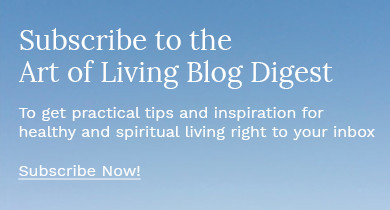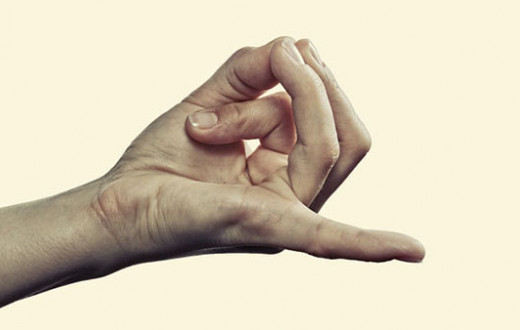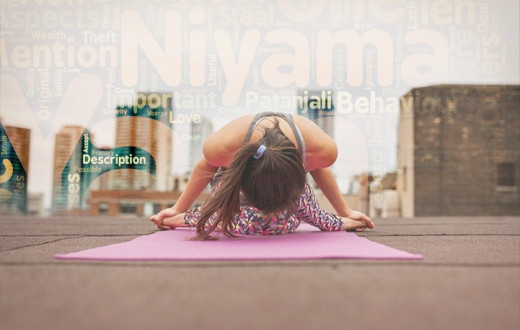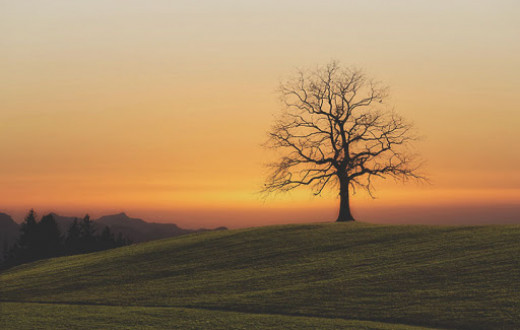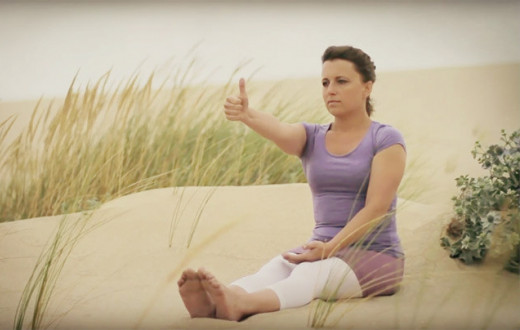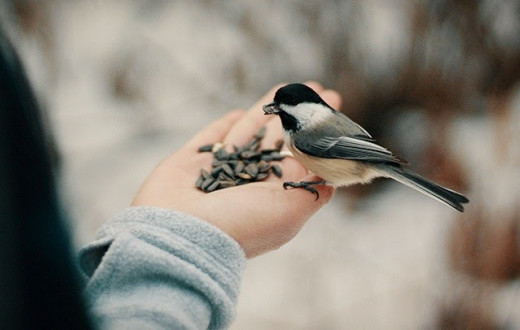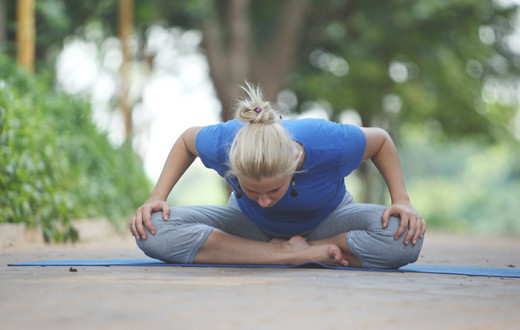Updated by Sejal Shah
The moon salutation, known in Sanskrit as Chandra namaskara (SHAHN-drah nah-muh-SKAR-uh), is a series of poses performed in a particular sequence to create a cooling and flowing movement.
Like the popular sun salutations, or Surya namaskara, each pose in a moon salutation is also coordinated with your breathing: inhale to stretch and extend, and exhale to bend and release.
But unlike sun salutations, where we are encouraged to hold each pose for a longer time, with moon salutations, poses flow into each other without much hold in each position. This is one reason why sun salutations are heating and stimulating, while moon salutations are cooling and quieting.
Although sun and moon salutation sequences represent different qualities, they are quite complementary to each other.
The yogic term “Hatha” also indicates these individual yet interconnected qualities. “Ha” refers to the warming, active energy of the sun, and “tha” refers to the cooling, receptive elements of the moon. The practice of Hatha yoga seeks to unify these opposing elements.
Including both the sequences in our seasonal routine helps create harmony and balance at many different levels. During summer we can include more moon salutations, while in winter, we can include more sun salutations.
Benefits of moon salutations
Moon salutations help you channel lunar energy which has cool, relaxing, and creative qualities. They help to relax and calm the mind. Moon salutations are useful when energy or temperatures are high, like during summer, and we are seeking a cooling, quiet presence.
Moon salutations also stretch your spine, hamstrings, and backs of legs, while strengthening your leg, arm, back, and stomach muscles. Like all other yoga practices, you may want to want to have guidance from a yoga instructor until you feel confident to practice on your own.
How to practice the moon salutation sequence
There are several variations of moon salutations. Here are two variations that are easy and suitable for yoga students of all levels. Keep breathing gently and evenly through your nose as you move into different poses. This integrates the body and mind and provides a meditative aspect to your practice. Listen to your body. It is recommended to work within your range ability. If you find yourself struggling to breathe, ease up a bit.
Unlike sun salutations which begin with the right leg, in moon salutations we can start with the left leg leading the sequence.
Moon salutation variation 1:
Please see the step-by-step sun salutation sequence instructions here.
Moon salutation variation 2:
In this variation, there are nine unique poses. Step by step, you will build up to the ninth pose, and then continue back down to the first pose, focusing on the opposite side of the body, which makes a total of 17 poses. Enjoy your moon salutations!
Get your mat and practice moon salutations with me!
Detailed instructions
Here is the full sequence with each step described fully.
1. Standing Mountain Pose
Stand with your feet hip-width apart in the middle of your mat. Bring your palms together in prayer position in front of your chest, resting your thumbs on your sternum, and take a couple of deep gentle breaths.
2. Side Bend/Half Moon
Inhale as you raise your arms overhead. Interlace your fingers and point your index fingers to the ceiling. Exhale as you bend your upper torso to the left. Keep your feet grounded and your thighs firmly engaged. Inhale, come back to the center. Exhale, bend to the right, and then inhale to come back to the center. Exhale, and bring your hands to your chest in namaste.
3. Goddess Pose
Inhale as you step your left foot wide apart from your right and turn your toes out slightly. Exhale as you bend your knees directly over your toes and lower your hips into a squat. Inhale, extend your arms out to the sides at shoulder height with your palms facing upward. Exhale, bend your elbows, and point your fingertips toward the ceiling. Bring the tips of your index finger and thumb together. Keep your upper arms and forearms at 90-degree angles. Have the motherly feeling of a goddess within your heart and a gentle smile on your face.
4. Star Pose
Inhale as you straighten your knees and elbows, keeping your feet wide apart. Extend your arms in line with your shoulders with palms facing upward. Spread your fingers as if you want to reach sideways through your fingertips.
5. Triangle Pose
Rotate your left foot 90 degrees, toes point to the left side. Turn your right toes in slightly (5-15 degrees). Exhale as you reach through your left hand on the left side and then fold sideways at the left hip. Rest your left hand on the outside of your shin or ankle and extend your right hand straight up to the ceiling.
6. Pyramid Pose
Inhale as you lower your right arm to stretch it on the right side in line with your shoulder and turn your torso to the left side. Exhale as you fold your torso over your left leg. Rest both hands on your lower leg, foot, or the floor.
If this is difficult, as you inhale, come up from the triangle, turn your torso to left, arms stretched on your sides, gently bring your right knee on the floor, bend your left knee so that left knee is on the top of the left ankle and exhale, and rest your torso on your left thigh.
7. Low Crescent Lunge
As you inhale, lift both your arms up and bend backward in the crescent moon. As you exhale, gently fold forward, resting your palms on the mat in line with your left foot.
8. Low Side Lunge
Turn around, rotate your left foot, leg and torso to face forward, keeping your left knee bent, and lower your tailbone. Exhaling, extend your right leg, turn your right toes forward or keep them facing the right side and your palms on the mat.
9. Garland Pose
Bring your hand in open lotus mudra at your heart.
Alternatively, to deepen the pose, inhale as you step your left foot towards your right and lower your tailbone, coming into a low squat. Bring your upper arms to the inside of your knees. Press your elbows against the inside of your knees and bring your palms together in prayer position or open lotus mudra. Exhale fully. Keep your feet as wide apart as needed to feel firm and steady.
From here on you continue following steps to come back to the original position of mountain pose.
10. Low Side Lunge
Inhale as you extend your left leg to the left. Exhale as you slide your torso toward your right foot, and place your hands on the floor to the inside of your right foot. If difficult, rest your hands on your right thigh instead of on the floor.
11. Low Crescent Lunge
Inhale and turn your right foot to point to the right of your mat, and align your right knee over the right ankle. Rotate your left leg inward and bring your left knee to the floor, pressing through the top of your left foot. Exhale and place your fingertips on the mat in front of you. Inhale, raise up and stretch your arms up and back to come into a crescent shape.
12. Pyramid Pose
Inhale as you straighten both legs. Exhale and fold your torso over your right leg. Rest both hands on your lower leg, foot, or the floor. Ground down through the heel of your back foot.
If this is difficult, you can skip this and instead go directly into triangle pose.
13. Triangle Pose
Inhale as you extend your left hand straight up to the ceiling, opening your torso to the right. Rest your right hand on the outside of your left shin or ankle. Exhale fully.
14. Star Pose
Inhale as you straighten your knees and elbows, keeping your feet wide apart. Extend your arms in line with your shoulders with palms facing upward. Spread your fingers as if you want to reach sideways through your fingertips.
15. Goddess Pose
Exhale as you bend your knees directly over your toes and lower your hips into a squat. Bend your elbows and point your fingertips toward the ceiling, bringing your tips of index finger and thumb to touch each other.
16. Side Bend/Half Moon
Inhale as you straighten your legs. Turn your toes forward and step your left foot next to your right. At the same time, sweep your arms out to the side and overhead. Interlace your fingers and point your index fingers to the ceiling. Exhale as you bend your upper torso to the left. Keep your feet grounded and your thighs firmly engaged. Inhale and come back to the center. Exhale as you bend to the right, and then inhale to come back to the center. Exhale as you release your arms.
17. Standing Mountain Pose
Bring your palms together in prayer position. Rest your thumbs on your sternum and take a couple of gentle breaths.
This is half of the moon salutation. To complete the second half, start over and do all steps leading with the right, and in steps 10-16 focus on the opposite side.
How to incorporate sun and moon salutations into your daily yoga practice
Sun salutations are often done at the start of a yoga class or session, to warm up and awaken the body and create energy and heat. They are great to do in the morning at sunrise or evening at sunset time. Soothing moon salutations can be included as part of a longer class or practiced by themselves as a restorative sequence to cool and relax the body. They are especially nice to do in the evening as the meditative, calming quality of the poses prepares the body and the mind for a restful sleep at night.
As a moon ritual, on a full moon night, doing a couple of rounds of moon salutations followed by a full moon meditation bathing in the cooling moonlight will surely be an ecstatic experience. Give this one a try on the next full moon night!
Whether you are doing sun salutations or moon salutations, take the opportunity to go within and connect with yourself. Tap into the serenity inside and remain anchored with it throughout the day.
Add SKY Breath Meditation to your daily yoga practice for even more benefits
Yoga practitioners worldwide are discovering SKY Breath Meditation as an easy and highly effective meditation practice. SKY increases your life force energy giving you amazing benefits for your mind, body, and spirit!
Attend a free introduction and enjoy guided meditation with a dose of “yogic cappuccino” (aka mentally invigorating breathwork). Click below to choose a day and time that works best for you. You’ll be glad you did!
Enjoy your cooling moon salutation practice, and dive into more postures with our yoga pose library!
Sejal Shah, E-RYT 500 Sri Sri Yoga Teacher, YACEP, C-IAYT, Meditation Teacher, Happiness expert, NYU Post Graduate Medical School approved Yoga-CME retreat facilitator, Mind-Body Wellness Writer, Homeopath. She can be followed on YouTube, Instagram, Twitter, and Facebook.

